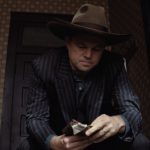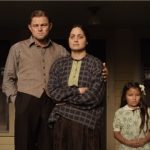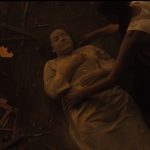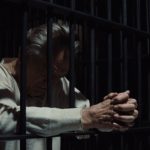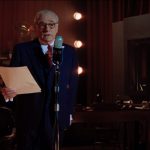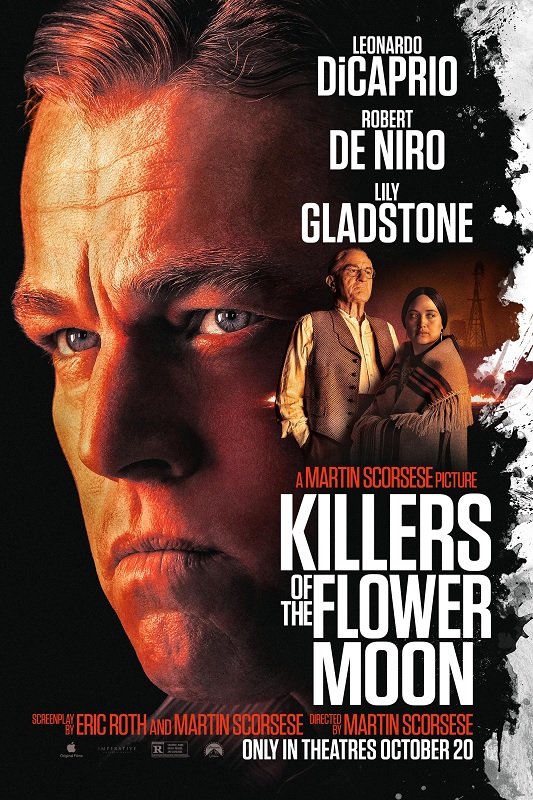

2023 – Killers of the Flower Moon
This was a very good movie, but it was way too long. Those two things are not mutually exclusive. The story could have been told in around two hours, but director Martin Scorsese drew it out to over three and a half hours. But that’s really my only complaint about the film. The casting and the acting were fantastic. The story was engaging for a drama, and the pacing though slow at times, kept me interested. And it had that big-blockbuster feel that Scorsese is known for.
The three leads were Robert DeNiro, playing the main bad-guy, Leonardo DiCaprio playing the man who he got to do a lot of his dirty work, and Lily Gladstone, playing the Osage Indian heiress to an oil fortune, who they were trying to swindle. The plan was to kill off all her family until the entire inheritance belonged to her and her children. But the trick was that after marrying her for her money, the nephew actually fell in love with her. It made for a very compelling story of love, betrayal, and murder.
DeNiro played William King Hale, the Reservation cattle rancher and benevolent benefactor to the Osage people, clean on the outside and dirty on the inside. This role was nothing new for the actor. He’s played the part a thousand times, so he’s gotten very good at it. He was a mobster, the only difference being that this film took place in 1919 on the Osage Indian Reservation. DiCaprio played Earnest Burkhart, his nephew. He isn’t terribly bright, but he is loyal to his uncle, and he has a particular love for money. Ernest meets and marries Molly Kyle, played by Gladstone, as she is part of the family that owns the Osage oil headrights. But even while Ernest falls in love with Molly, who is a diabetic, he plots with his uncle to murder her family. And since Hale is a sheriff’s deputy, and has influence on nearly everyone on the Reservation, white and Native American alike, the murders are not even investigated. Nothing is done.
And that’s the basics of the plot. And the kicker of it is, this movie was based on a true story. The non-fiction book on which the movie is based had the same name, and just a glance at the cover of the book caught my attention. It says “The Osage Murders and the Birth of the FBI.” I bet the formation of the FBI and Hoover’s involvement in it would probably make a pretty good movie in its own right, but Scorsese barely touches that story. Instead, he focuses on the crime and corruption, and the despicable ways powerful white men devastated the Native American Indians… again. It was enough. After all, we don’t want a five hour movie, do we? I wouldn’t put it past Scorsese.
I particularly liked DiCaprio’s performance. I remember back in 1997 when he starred in Titanic. He was good, but not great. How he has grown as an actor! He has become incredible. I think he has joined the ranks of the big-name superstars, that upper echelon of Hollywood royalty who can do no wrong on the screen. Every movie he is in, every role he plays, is just phenomenal. He commits to every moment in front of the camera and really inhabits the characters he plays. His consistent mannerisms, his facial expressions, and the intensity in his eyes, all combine to give him a powerful and memorable screen presence.
But I also have to praise the work of Lily Gladstone, who, I’ll be honest, I have never heard of before. Based on her filmography given in Wikipedia, this is only her eleventh film appearance, and I don’t recognize the titles of any of the previous ten. She did such a great job! The aesthetics of the movie clearly tried to be as authentic as possible, and Gladstone’s natural beauty and ethnic background were always captivating on the screen. She was stoic, as one would be when surrounded by, and forced to be subservient to those by whom one is conquered. But despite this particular indignity, she had a nobility about her and a strength, despite her physical frailty because of her diabetes. And the amount of loss and injustice heaped upon her as her sisters are all murdered, one by one, was horrifyingly powerful. Gladstone really delivered in this incredible performance.
Rounding out the cast were a few veteran actors like Jonathan Lithgow, Jesse Plemons, and Brendan Fraser, as well as other lesser known actors, like the one’s playing Molly’s mother and sisters, Tantoo Cardinal, Cara Jade Myers, JaNae Collins, and Jillian Dion. There were several other actors whose faces I recognized, but I had to look up their names, like Jason Isabell, Scott Shepherd, and Katherine Willis.
The ending was actually a little strange, but clever at the same time. There was an epilogue that told what happened to the characters after the story ended. Most films would simply put up text on the screen to inform the audience. But Scorsese chose an interesting way to tell us their fates. The narrative ended and we skipped ahead to what appeared to be a 1940s radio program, back when radio programs were live events, with cleverly manufactured sound effects and a live orchestra. And the last announcer on the screen, telling what eventually became of Molly Kyle, was none other than Martin Scorsese, himself. It was a powerful story that was told in a way that only the legendary director could tell it. It was beautifully filmed, and masterfully performed. But please, Mr. Scorsese. Stop making your movies so long. They can sometimes be a little hard to sit through.



